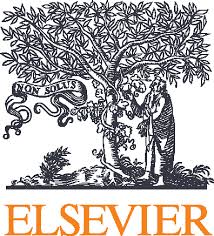The Higgs Boson was found at the LHC and it is the LHC that continues to give us the most data and information about its properties. In this work we investigate the way new 'beyond-the-standard-model' (BSM) physics might affect the data and results we obtain at the Large Hadron Collider. Our technique takes advantage of effective field theories, meaning that our results make no assumption about what the new physics may be: it is general.
ABSTRACT:
"We propose differential observables for pp→Z(ℓ+ℓ−)h(bb) that can be used to completely determine the tensor structure of the hZZ/hZff couplings relevant to this process in the dimension-6 SMEFT. In particular, we propose a strategy to probe the anomalous hZμνZμν and hZμνZ~μν vertices at the percent level. We show that this can achieved by resurrecting the interference term between the transverse Zh amplitude, which receives contributions from the above couplings, and the dominant SM longitudinal amplitude. These contributions are hard to isolate without a knowledge of the analytical amplitude, as they vanish unless the process is studied differentially in three different angular variables at the level of the Z-decay products. By also including the differential distributions with respect to energy variables, we obtain projected bounds for the two other tensor structures of the Higgs coupling to Z-bosons."
There are many questions surrounding the somewhat-arbitrary mass of the Higgs Boson. In this we employ a recently-proposed mechanism for this mass to be set by the evolution of the universe. Using this mechanism we were also able to address other big issues in modern physics such as Dark Matter, Baryogenesis & Neutrino masses.
ABSTRACT:
"We present a unified relaxion solution to the five major outstanding issues in particle physics: Higgs mass naturalness, dark matter, matter-antimatter asymmetry, neutrino masses and the strong CP problem. The only additional field content in our construction with respect to standard relaxion models is an up-type vectorlike fermion pair and three right-handed neutrinos charged under the relaxion shift symmetry. The observed dark matter abundance is generated automatically by oscillations of the relaxion field that begin once it is misaligned from its original stopping point after reheating. The matter-antimatter asymmetry arises from spontaneous baryogenesis induced by the CPT violation due to the rolling of the relaxion after reheating. The CPT violation is communicated to the baryons and leptons via an operator, ∂μϕJμ, where Jμ consists of right-handed neutrino currents arising naturally from a simple neutrino mass model. Finally, the strong CP problem is solved via the Nelson-Barr mechanism, i.e., by imposing CP as a symmetry of the Lagrangian that is broken only spontaneously by the relaxion. The CP breaking is such that although an O(1) strong Cabibbo-Kobayashi-Maskawa (CKM) phase is generated, the induced strong CP phase is much smaller, i.e., within experimental bounds."
The Higgs Boson is a scalar particle, meaning it has a quantum spin of 0. In isolated environments, such particles have been shown in the past to exhibit strange behaviour at very high energies. In this review we attempt to more rigorously prove these results and improve the formalism for modern application.
ABSTRACT:
"These notes provide a comprehensive review of the semiclassical approach for calculating multiparticle production rates for initial states with few particles at very high energies. In this work we concentrate on a scalar field theory with a mass gap. Specifically, we look at a weakly-coupled theory in the high-energy limit, where the number of particles in the final state scales with energy, n∼E→∞ , and the coupling λ→0 with nλ held fixed. In this regime, the semiclassical approach allows us to calculate multiparticle rates non-perturbatively."
This work deals with similar topics to those of the above review.
ABSTRACT:
These notes provide a comprehensive review of the semiclassical approach for calculating multiparticle production rates for initial states with few particles at very high energies. In this work we concentrate on a scalar field theory with a mass gap. Specifically, we look at a weakly-coupled theory in the high-energy limit, where the number of particles in the final state scales with energy, n∼E→∞ , and the coupling λ→0 with nλ held fixed. In this regime, the semiclassical approach allows us to calculate multiparticle rates non-perturbatively.
My thesis combines elements from the publications above. A PDF can be found here.
ABSTRACT:
The discovery of a 125 GeV scalar boson at the Large Hadron Collider in 2012 sparked at least as many questions as it answered. The Higgs boson is unique in being the only known fundamental scalar particle, which makes it compelling in a variety of contexts. As the field of Higgs physics has developed and aged, this era-defining boson has crept into relevance throughout all areas of high-energy physics.
This thesis looks at the Higgs boson and its potential properties in three different regimes:
- The first focuses on how measurements of Higgs interactions at particle colliders can be used to discern and identify signs of new physics. A novel analysis method is presented, which uses differential observables to constrain the effects of higher-energy physics within the Standard Model Effective Field Theory framework. This approach takes advantage of expected angular structures in the matrix elements to maximise sensitivity and obtain competitive bounds on the anomalous Higgs-gauge couplings.
- The second takes a more theoretical approach and looks at the potential high-energy high-multiplicity behaviour of the Higgs. Multiparticle scalar production is considered in an idealised non-perturbative limit by employing a semiclassical treatment. Previous calculations of the semiclassical rate are consolidated and extended.
- The third investigates the potential role of the Higgs in the dynamics of the early universe. A unified model is presented in which minimal additional field content leads to the solution of five problems in fundamental physics. The available parameter space for this model is within the reach of proposed future experiments.
These three areas of research all have the same physics at their core but are fuelled by techniques and ideas from different fields. Together they form three small distant-yet-connected pieces of the ever-growing network of Higgs-related investigations, or Higgsaw.



